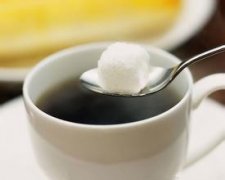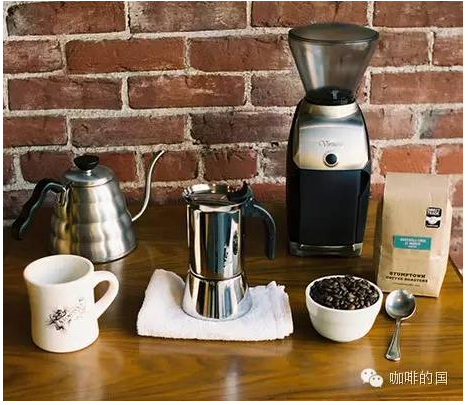What is Crema? The basic knowledge of espresso
This classic English text has been translated by many people, but most translators do not understand or understand the principle of espresso, so it is not very accurate or difficult to understand correctly. I think this article is translated by an expert who really understands espresso, especially the understanding of the original text and Chinese is very good. The good thing about this article is that it expounds the essence and spirit of Crema from the point of view of the inherent composition of coffee, the law of chemical changes after heat and how to better produce a pleasant Crema.
What is Crema? (Klima)
In the process of roasting coffee beans, a large amount of carbon dioxide is produced in the coffee beans, most of which will be released during the cooling process, and a few will continue to be preserved inside the beans, and these gases will be released when the coffee powder is ground, so coffee must be made as soon as possible after grinding.
When hot water hits coffee powder under high pressure, it emulsifies the insoluble oil in coffee powder and saturates a large amount of carbon dioxide, which is much larger than the solubility of hot water under normal pressure. this is why countless small foams appear immediately when the liquid flows out of the handle. But this does not fully explain "Crema" (Klima), you usually open a can of Coke, we can see countless bubbles coming up, but they simply do not last, what is the principle of this?
To produce stable bubbles, we need some bubbles and some compounds to "wrap" the bubbles so that the bubble structure remains stable and elastic. The process of this chemical reaction can be thought of as the role of a surfactant. Unlike milk bubbles, which do this through egg whites, coffee uses a substance called protein melanin. It is produced by a chemical reaction of a group of mixtures during baking. In fact, scientists do not know much about the process. Neither protein nor melanin is hydrophilic, so when hot water strikes, they are naturally distributed on the surface of bubbles, so they can come into contact with more air, resulting in countless small bubbles, so we have-- bubbles. There are other things-grease (the author means "oil" and "fat", fat is solid, oil is liquid), and the existence of oil is disadvantageous. Oil often destroys the structure of foam and leads to failure. Think about it when we make a cake, we have to remove the yolk, otherwise the fat in the yolk will cause the egg whites to be whipped, that is, to stir the egg whites quickly and beat them into milk bubbles.
So will the oil in the coffee cause crema to disappear quickly in a few minutes? The answer is both right and wrong. The surfactant is dissolved in water, and due to the action of gravity, the surfactant of the bubble surface will be pulled off the surface of the foam together with the water, making the foam fragile, robbing elasticity, and then quickly disappearing. The speed at which the foam disappears is related to the speed at which the water is dragged away, but the foam on the surface of a cup of coffee lasts much longer than the foam on the surface of a cup of coffee, because the liquid is much thicker than it is quickly flushed. This is also confirmed by our taste.
Extract the color of insufficient espresso Crema
Color of over-extracted espresso Crema
The color of crema should be light reddish brown, but what does yellow-white or very black almost charred brown mean? The answer comes from drinks, because crema is actually carbon dioxide bubbles wrapped in brewed coffee, so the darker the foam means the stronger the coffee becomes a natural assumption. But it's actually very difficult to tell the color of coffee unless you dilute two cups of coffee or look at it under a microscope.
Another factor also plays an important role: the reflection of light from the foam means that the color of the coffee is much lighter than it actually is through the foam. And the smaller the foam, the greater the effect, so even if the espresso itself is very black, it may look very light (which explains why black beer has very white foam at the top).
A 15-second espresso usually has a whiter crema because it is lighter. Coffee powder is quenched by water for a relatively short time, and the viscosity of coffee is lower than that washed out in 25 seconds. For the same reason, coffee made from a lower water temperature will be lighter because it does not have enough energy to dissolve the substance in the coffee (it should be low solubility at low water temperature, not so-called energy). This also explains why excessive quenching can lead to the formation of crema that is as dark as charred.
Source: enigma Sue Cafe
Important Notice :
前街咖啡 FrontStreet Coffee has moved to new addredd:
FrontStreet Coffee Address: 315,Donghua East Road,GuangZhou
Tel:020 38364473
- Prev

Seven tips for making coffee boiling will make the coffee bitter?
1. Boiling will make the coffee bitter. It is recommended that you never boil the coffee directly on the fire, but brew it at a temperature between 90 and 96 ℃ (195 to 205 ℉). 2. Do not reheat the brewed coffee. It is recommended that you brew the coffee each time before drinking it, and only brew the amount you want to drink. The temperature to maintain the best flavor of the coffee is 86 ℃ (185 ℉). 3. Use fresh
- Next

Illustration of the operation method and process of the mocha pot
Moka Pot is a tool for extracting espresso. It is widely used in Europe and Latin America. It is called Italian trickling filter in the United States. The mocha pot is a coffee brewed by passing the pressurized steam directly through the coffee pressed powder and through the coffee pressed powder, extracting the inner essence of the coffee and brewing it with deep-roasted coffee beans.
Related
- What is the meaning of lactic acid fermentation with coffee bean treatment?
- How to judge the state of foam by sound?
- How does the latte pull out the unicorn pattern? Come to get for a little trick to improve the flower pull!
- Will flower pulling affect the taste of the latte?
- Do you know the history of coffee?
- The difference between honey treatment and sun washing what is raisin honey treatment?
- What kind of milk can a novice use to make coffee foam to keep the foam longer? The correct method and skills of milking tutorial sharing
- Why do washed coffee beans taste sour? Flavor characteristics of washed Coffee
- Introduction to the skill of how to practice the size and height of water injection around the circle of hand-brewed coffee
- How do beginners practice coffee flower drawing from scratch?

